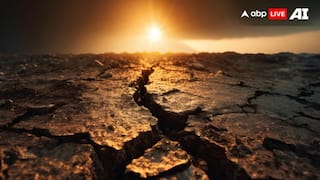Johnson & Johnson Abandons Talc-Based Baby Powder: Here's A Timeline Of The Talc Controversy
J&J from now on will make baby powder products by cornstarch instead of talcum powder after the company conducted an assessment of its portfolio

The wait is over. Johnson & Johnson (J&J), the US-headquartered health conglomerate, is finally abandoning its talc-based baby powder. The company on Friday announced that it will stop selling talc-based products globally in 2023. The health major took the decision amid years of continuous legal battles in the US and growing dissent againts J&J's products.
According to media reports, J&J introduced its baby powder made of crushed talc, the mineral, which can be found with asbestos in the earth and raised several questions that the products are contaminated with toxic asbestos. Recently, J&J has lost multimillion-dollar lawsuits related to ovarian cancer and mesothelioma caused by baby powder. The company has been forced to pay about $3.5 billion in settlements so far to resolve talc cases, according to the company's bankruptcy filings.
J&J said it had made the commercial decision to transition all its baby powder products to use cornstarch instead of talcum powder from now on after conducting an assessment of its portfolio.
However, the uncanny relation between talcum powder and cancer has a long history, dating back to 1930. Here we will take a look at a year-wise timeline of the talc controversy that points out how talcum powder, cancer and J&J became synonymous among consumers.
1930s
First accounts of harmful effects of talc on humans recorded.
1971
British Journal of Obstetrics & Gynecology study discovers talc particles in 75 per cent of ovarian tumours.
1975
Internal J&J memo acknowledges problematic link between genital talc use and ovarian cancer.
1977
Faced with possible federal ban of cosmetic talcum powder, J&J begins testing baby powder with corn starch as a replacement.
1982
Cramer study: First case-control study to link genital talc use with ovarian cancer finds women have a 92 per cent increased risk of ovarian cancer when using talc for feminine hygiene purposes.
1992
Federal National Toxicology Program issues report finding “clear evidence of carcinogenic activity of talc” in rodent-based study.
1992
Internal J&J memo outlines the planned targeting of Black and Hispanic women through increased marketing in hopes of countering an overall decline in sales of products containing talc. The document notes that those populations have the highest usage rate of the products.
1996
Condom industry removes talc from all products due to ovarian cancer concerns.
2006
Major talc suppliers place toxicity warning on shipments of talc to manufacturers.
2011
Cramer study on menopausal medicine: A 10-year case-control study finds women with long-term genital talc use had a two-thirds increase of developing ovarian cancer as a result.
2013
Safe Cosmetic Act in California lists talc as a suspected carcinogen.
2013
National Institutes of Health Study: Meta-analysis that looked at 30 years of data found significant link between genital talc use and ovarian cancer.
2014
US' National Cancer Institute issues report citing talc use as a risk factor for ovarian cancer.
2016
Cramer study: Finds genital talc use associated with factors such as age, weight, race in dramatic increase of ovarian cancer risk.
2016
In three separate trials, juries return verdicts totalling almost $200 million on behalf of women who died of ovarian cancer from using talcum powder for feminine hygiene for decades.
2017
Baby powder manufacturers begin putting ovarian cancer warning labels on private label products, including those sold at Walmart and Dollar Tree stores.
2017
Separate trials in Missouri and California find that J&J’s talcum powder products caused the ovarian cancer of two women, with a combined jury award of more than $525 million.
2018
A St. Louis jury finds Johnson & Johnson and its talc supplier liable for more than $4.6 billion in damages on behalf of 22 ovarian cancer victims, finding that the companies were aware of and responsible for cancer-causing asbestos in talcum powder products.
2018
Reuters and The New York Times each publish reports, based on corporate and legal documents, stating that Johnson & Johnson was aware of the presence of asbestos in its talcum powder products for decades, but chose to deny the dangers to regulators and the public.
2019
A US House subcommittee held an investigative hearing on the science and safety of talc-based products, prompted by the FDA’s discovery of asbestos-containing talcum powder in certain cosmetics marketed to children and teens. The panel may recommend granting the FDA more authority to mandate safety recalls of cosmetics, powders and personal care products.
2019
Reuters publishes a special report documenting that, in the face of declining baby powder sales, Johnson & Johnson has created marketing campaigns targeting minority populations despite the company’s knowledge of the dangers of talcum powder.
2019
Johnson & Johnson recalls more than 30,000 bottles of its baby powder after FDA discovered cancer-causing chrysotile asbestos in the product.
2020
The FDA holds daylong public hearing on recommendations to expand the definitions of carcinogenic talc and requiring more sensitive testing of talc products.
2020
In addressing more than 17,000 pending legal claims, a New Jersey federal court finds scientific evidence of a talc-ovarian cancer connection to be “reliable.”
2020
Johnson & Johnson announces that the company will no longer sell talc-based powders in North America.
2022
Johnson & Johnson announced that the company plans to stop selling its legacy talc-based baby-powder products globally in 2023.
ALSO READ | Johnson & Johnson To Stop Selling Talc-Based Baby Powder Globally From 2023 As Lawsuits Mount
Check out below Health Tools-
Calculate Your Body Mass Index ( BMI )
Trending News
Top Headlines











































